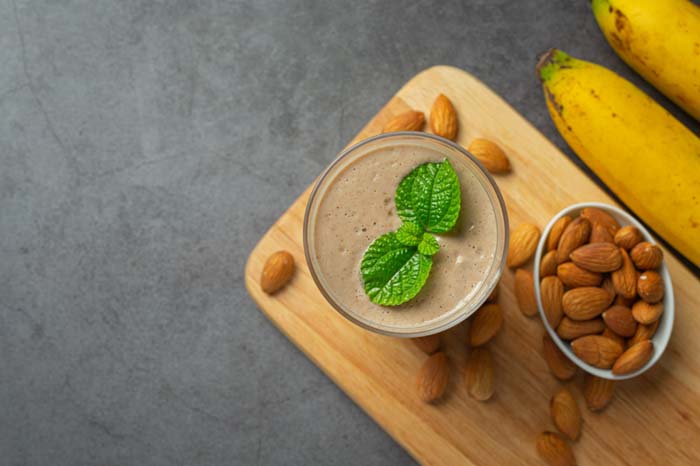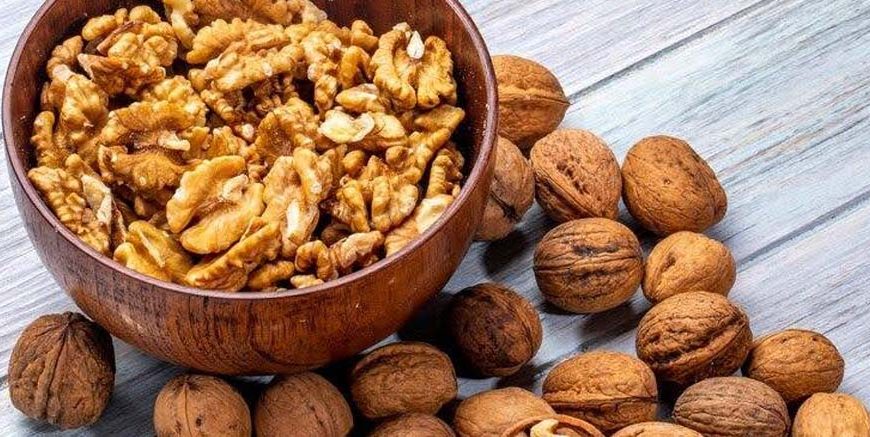Just like any nut, walnuts are not merely a good snack that many people relish, but they are also a great source of nutrients that can greatly impact growing up kids. These tree nuts are rich in nutrients that have an impact on the child’s general wellbeing and improvement. Now it is time to discuss the numerous benefits of walnut consumption for a kid’s diet and to reveal the ways on how to add this product to the child’s meals.
Table of Content:
- Walnut Benefits for Kids
- Walnut Recipes for Kids
- How Many Walnuts Per Day
- How Much Protein in Walnuts
- When to Eat Walnuts
- References
Walnut Benefits for Kids:
- Brain Development and Cognitive Function:
- Heart Health:
- Stronger Immune System:
- Better Bone Health:
- Improved Digestive Health:
- Enhanced Sleep Quality:
- Mood Regulation:
Want to have a brain? Walnuts are so called ‘brain food’ for a reason. They are good sources of omega-3 fatty acid , alpha-linolenic acid (ALA) , which play a significant role in the development and proper function of the body’s brain. These nuts may be of immense advantage to children in their academic work since they work to increase the children’s concentration, memory and enhanced performance.
Habits that affect the health of the heart have to be instilled in young people, right from childhood. For instance, the recommended nuts include; » Walnuts, which are rich in heart-friendly omega 3 fatty acids, fibre and antioxidants. Thus, these components combine and decrease the levels of a bad cholesterol and the general cardiovascular profile to create the groundwork of a healthy heart in adulthood.
Despite this, walnuts are nutritious foods because they contain antioxidants such as polyphenol and vitamin E that intermediate the immune system health, and this makes the children resistant to diseases and infections. Healthy students, happy students or in another perspective, there will be fewer days that students are sick that means more learning and more fun time.
Children become bigger and their bones should also be big and walnuts can assist in this. They include calcium magnesium and phosphorus – the basic minerals that are used in the framing of bones. Although walnuts cannot replace other calcium containing products, that is dairy or other mineral containing products, they can be considered as beneficial for bones.
Fibre material, which is contained in the walnuts boosts digestion in the human body system properly. It helps in regular evacuation, calcifies the gut content, increases the PH level of the gut and supports healthy bacteria in the support of the gut. Moreover, there is proof that gut health determines the general wellbeing of an individual and that children with good gut health are more joyful.
The consumption of walnuts contains bioactive compounds that include melatonin that has an effect on sleep in people. Introducing the product into the system of feeding the child may help to get better quality of sleep at night; hence, when the child is at school or the student at college, he or she should be more energised.
The last but not the least about the facts about walnuts is its fact that omega-3 fatty acids, which exist in the walnuts, help to shift the mood and fight against depression. As for now, there is a need to conduct more research, but if walnuts are included into the child’s diet, it could positively affect their psychological well-being.
Walnut Recipes for Kids:

Now that we know the benefits, let’s explore some kid-friendly ways to incorporate walnuts into meals and snacks:
- Walnut Butter:
- Banana Walnut Smoothie:
- Walnut Trail Mix:
- Walnut-Crusted Chicken Tenders:
- Walnut Energy Balls:
- Walnut Pesto:
- Waldorf Salad:
It is good to be taken like peanut butter; spread it on bread or dip an apple with it.
This is prepared by mashing one banana and adding this to a glass of milk, a spoonful of yoghurt and a portion of walnut to help support one’s morning meal.
These are best eaten together with other dried fruits and seeds to obtain a rather healthy kind of snack.
Add crushed walnuts in the coating of baked chicken tenders.
Walnut and date paste with a little cocoa and a drizzle of honey.
Especially mix walnuts, a handful of basil, three cloves of garlic, and some olive oil for pasta sauce or sandwich spread.
Apples and celery with walnuts in a light mayo; a simple delicious recipe.
How Many Walnuts Per Day:
Regardless of its nutritional values it is also important from time to time to come up with some limitations concerning the amount of walnut that is taken. In the case of children, the amount can be taken depending on their age, size, and other diet patterns which they take. As a general guideline:
Toddlers (1-3 years): 4-6 walnut halves per day
Young children (4-8 years): 6-8 walnut halves per day
Older children (9-13 years): 8-10 walnut halves per day
As usual, and you already know that you can apply these tips only in parts, simultaneously coping with every aspect. However, it is always recommended to consult a paediatrician or even a registered dietitian who will give suggestions regarding the child’s needs and special intake necessities, and also to meet the presence of an allergy.
How Much Protein in Walnuts:
What little child will not wish to grow properly, well I tell you that protein is essential for that proper child growth. Speaking of proteins, the number of plant proteins can be considered fairly high in the case with walnuts. On average:
- 1 ounce (28 grams) of walnuts contains about 4 grams of protein
- 1 walnut half (2 grams) contains approximately 0.3 grams of protein
However, depending on the serving size it cannot be compared with the protein content found in almonds or pistachios but it is relatively helpful in protein provisions of a child’s daily nutritional needs. They’re most beneficial to vegetarians and vegans as a form of complete protein from plant based sources.
When to Eat Walnuts:

The timing of walnut consumption can enhance their benefits:
- Breakfast:
- Mid-morning Snack:
- After-school Snack:
- Before Bedtime:
- With Meals:
Walnuts can be taken in the morning by mixing in oatmeal or yoghurt to give energy for the day’s activities.
A small portion of nuts, for example a walnut can help in suppressing the appetite and can help one stay alert during school times.
When it comes to getting energy to power either learning and or activities after the day, walnuts could be valuable.
Perhaps a small serving would make the quality of sleep better because melatonin is present.
Walnuts may be grounded and mixed with other foods; they can also be chopped and served as garnishing for salads or included as a part of other meals.
Instead of talking about when walnuts should be consumed, the aspect of detail lies in making walnuts a part of the daily diet. Contrary to how often you eat them, what matters most is the kind of food, in this case walnuts, and how frequently you consume it.
In conclusion, the growing children are capable of benefiting in many ways since they take walnuts. From enhancing the brain development, supporting the circulation problems of the heart, to enhancing the immunity of a child, these nuts packed WITH vitamins and nutrients should definitely be included in the child’s diet. By incorporating walnuts into meals and snacks in creative ways, parents can ensure their kids receive these nutritional advantages while enjoying delicious foods. Remember to introduce walnuts gradually, watch for any allergic reactions, and consult with healthcare professionals for personalised dietary advice. With their impressive nutritional profile and versatility in cooking, walnuts can be a small but mighty contributor to your child’s health and well-being.
For more such interesting blogs, Visit EuroKids














